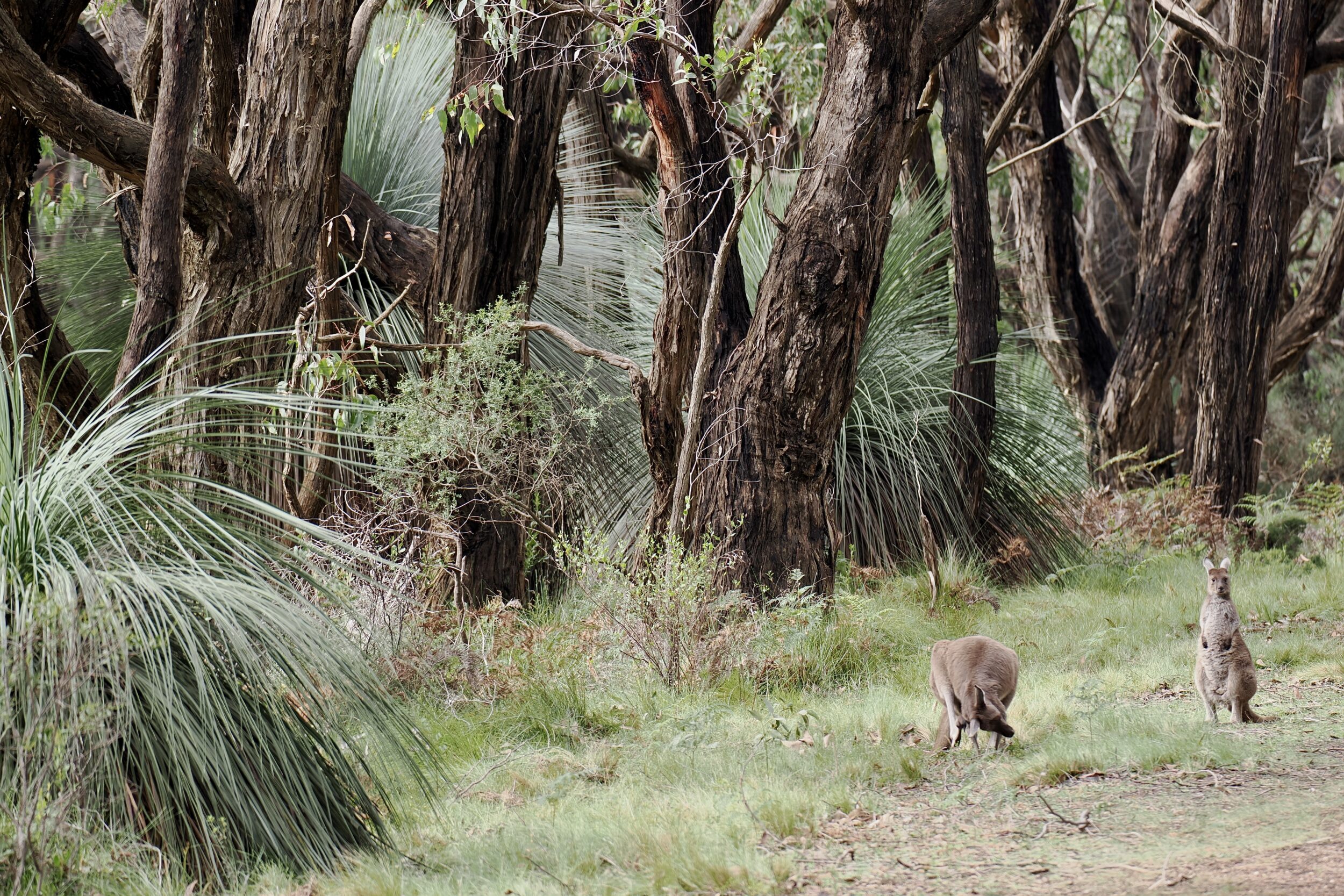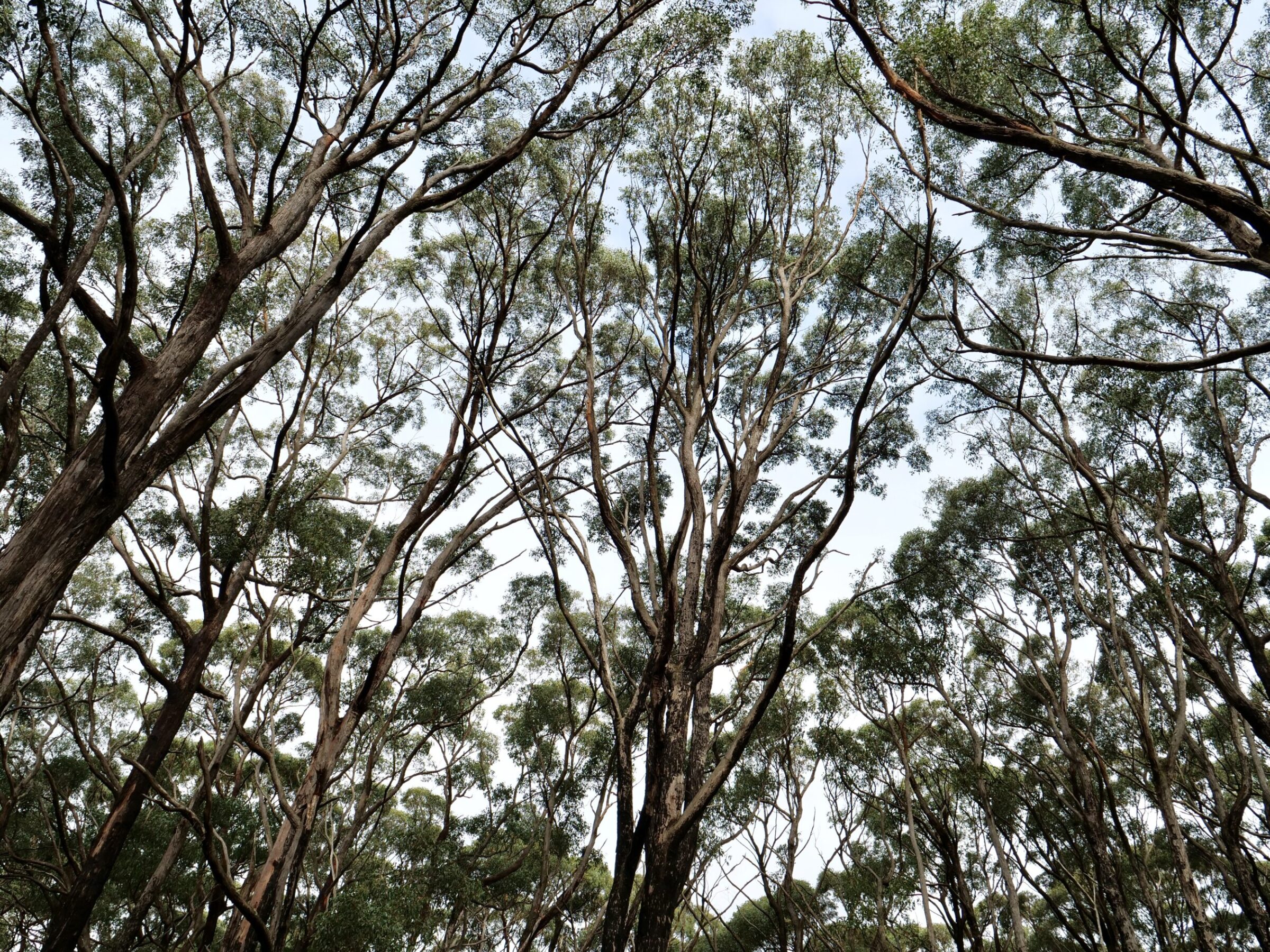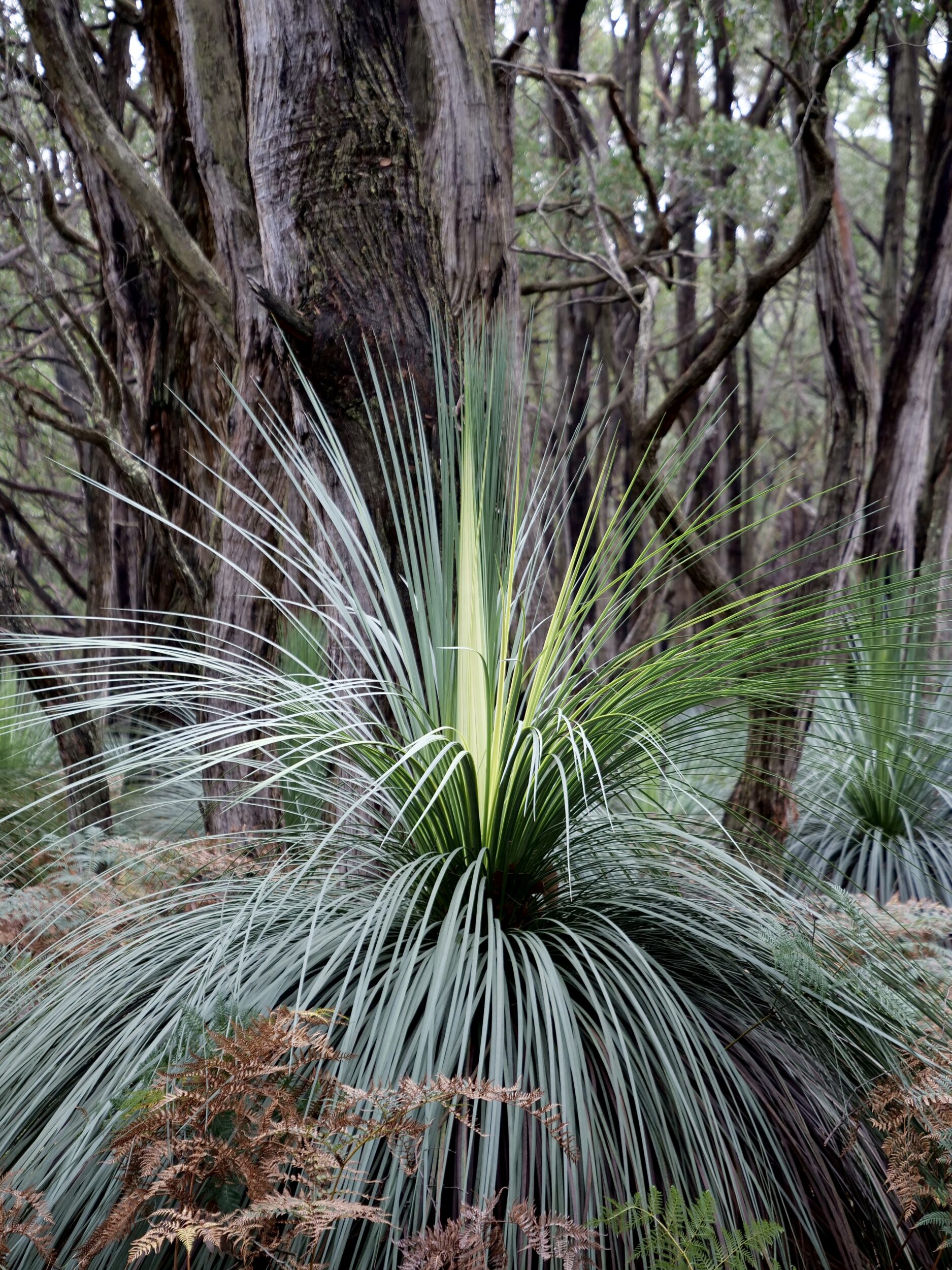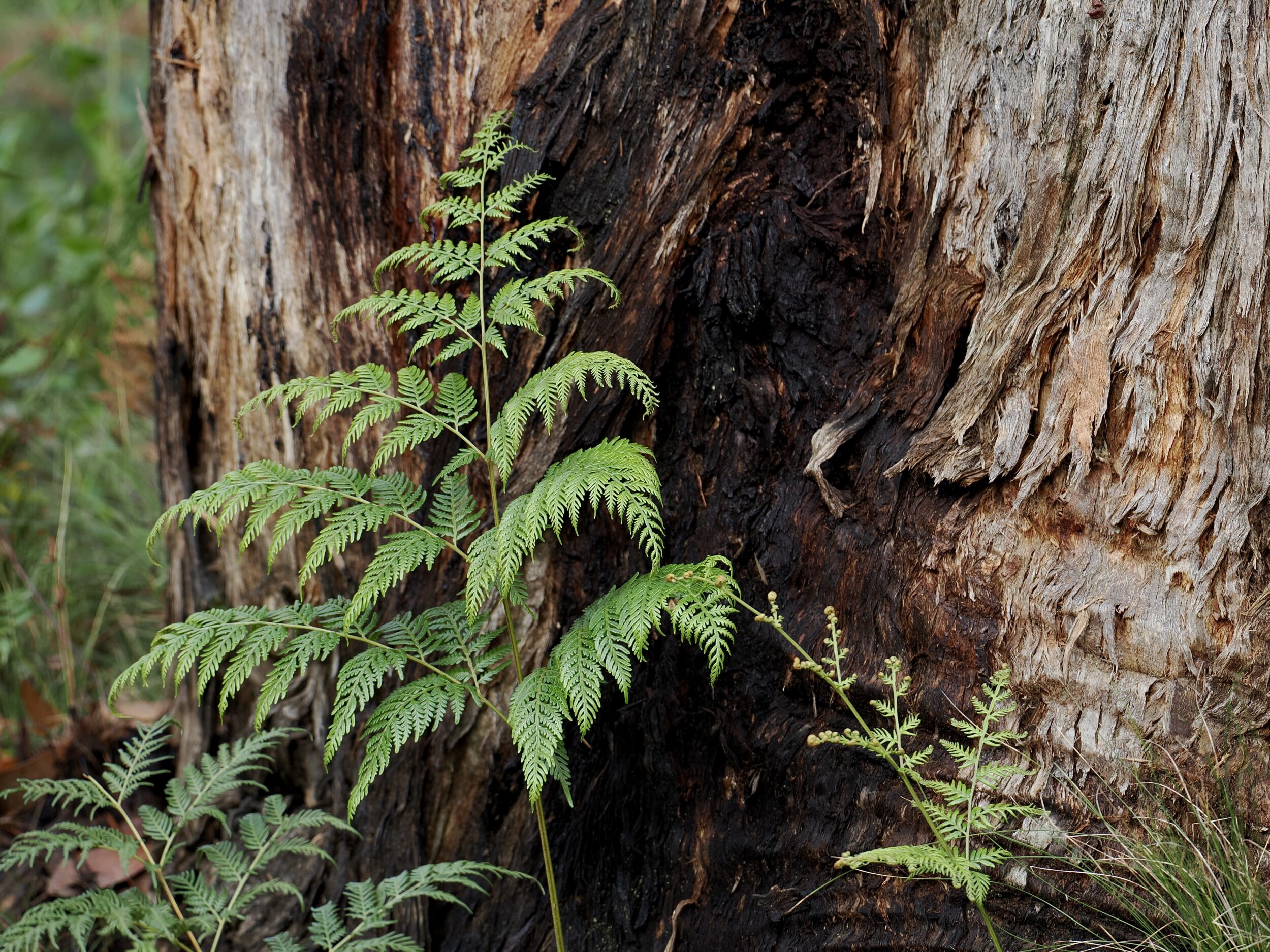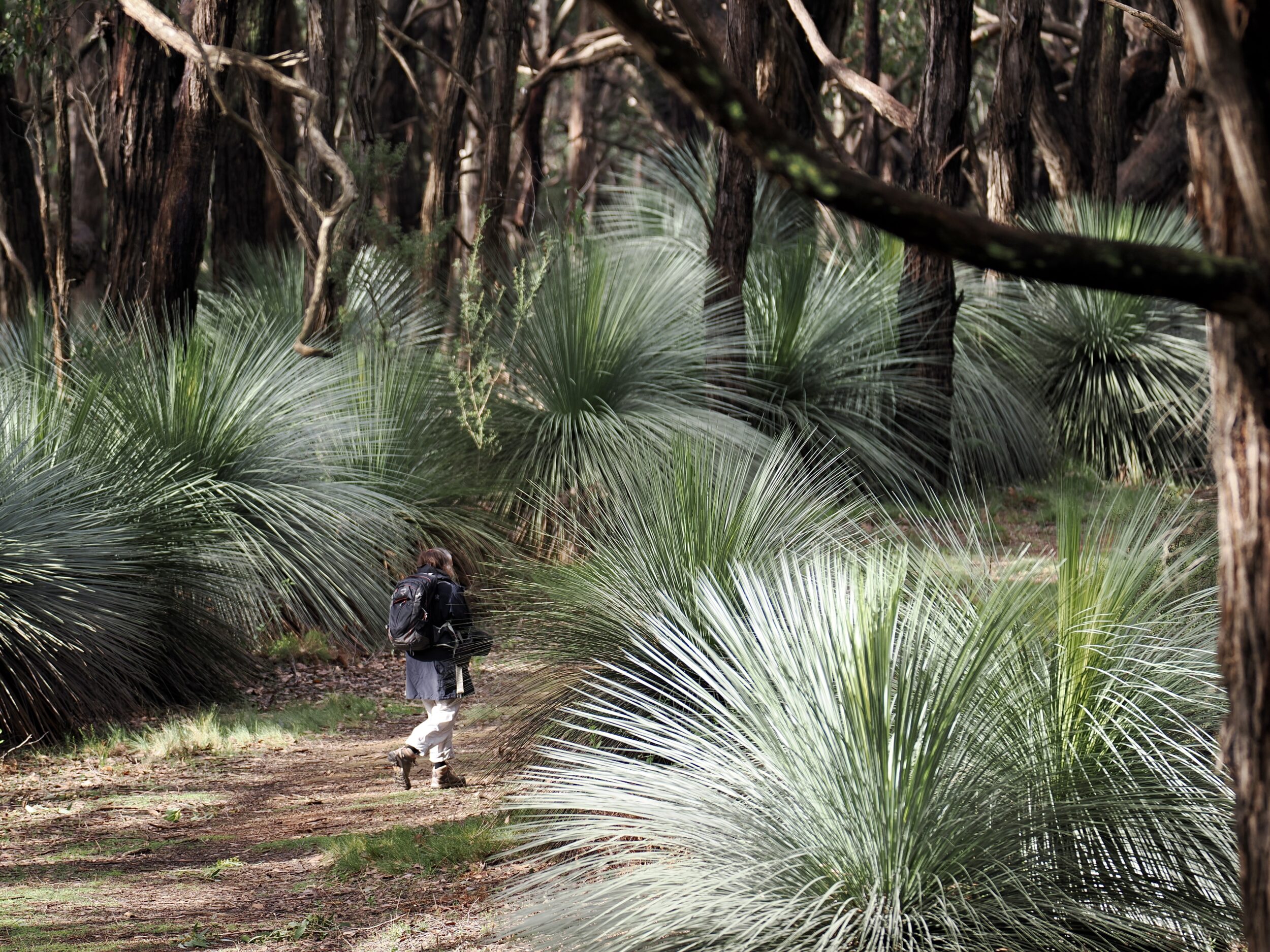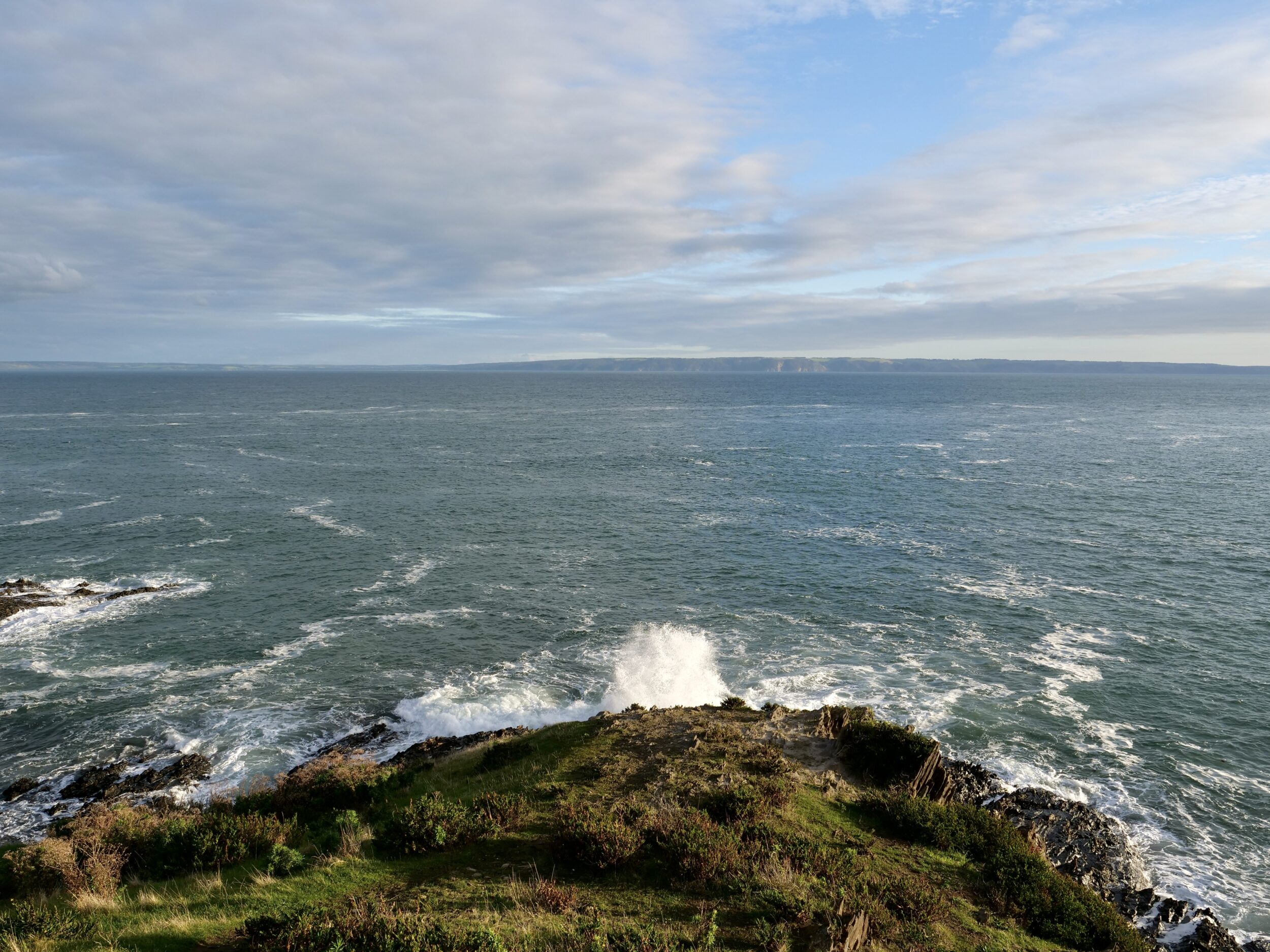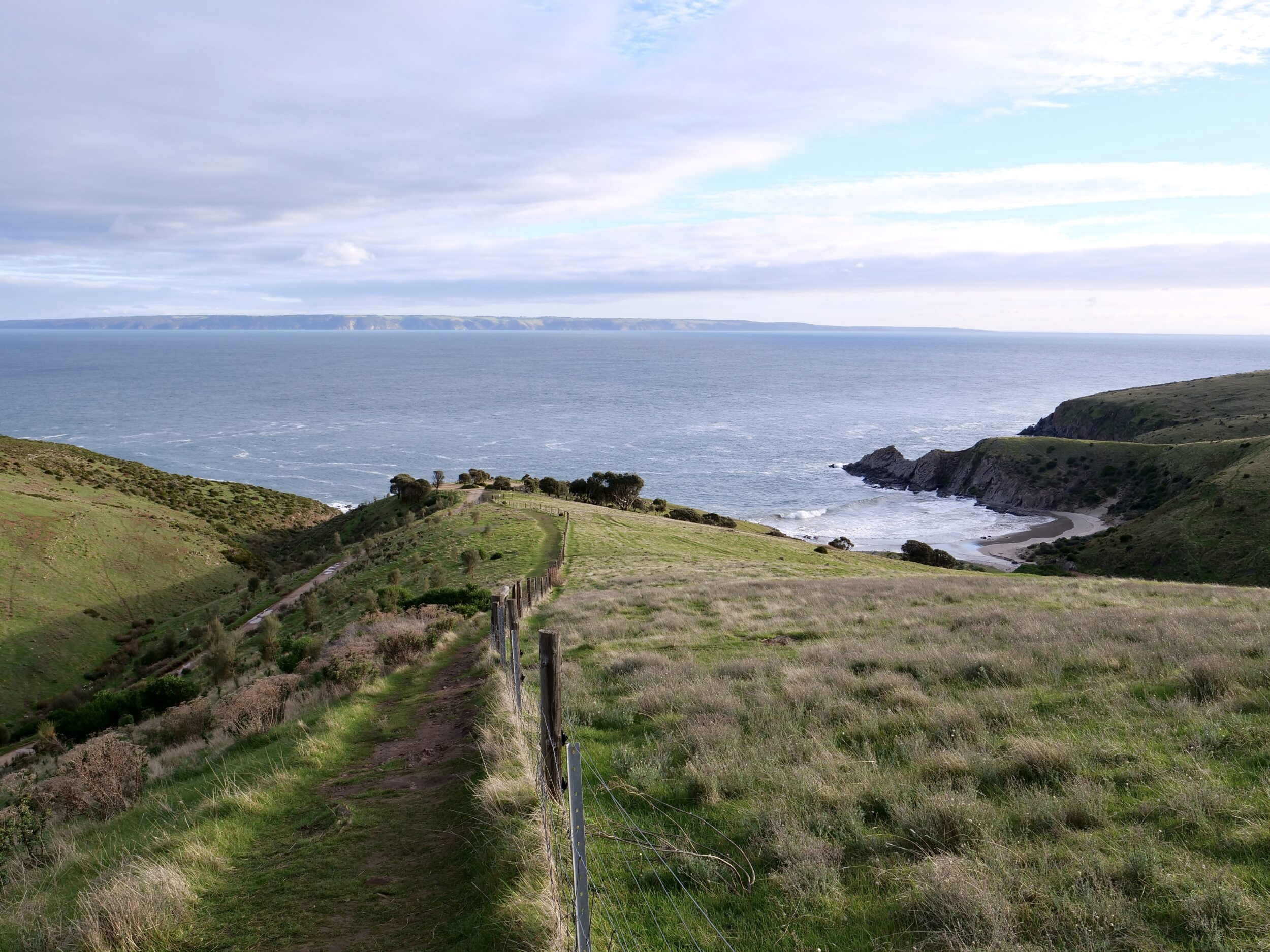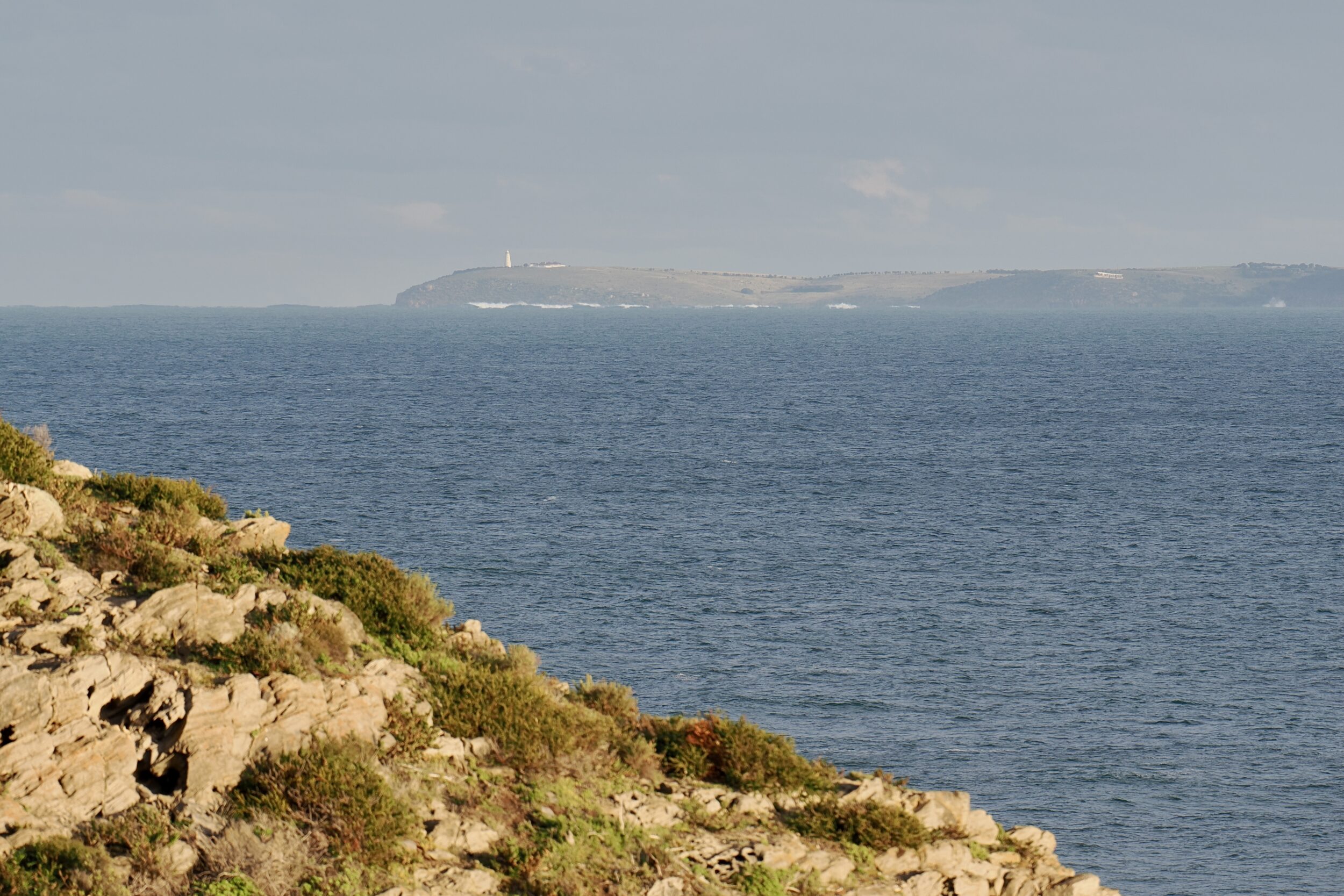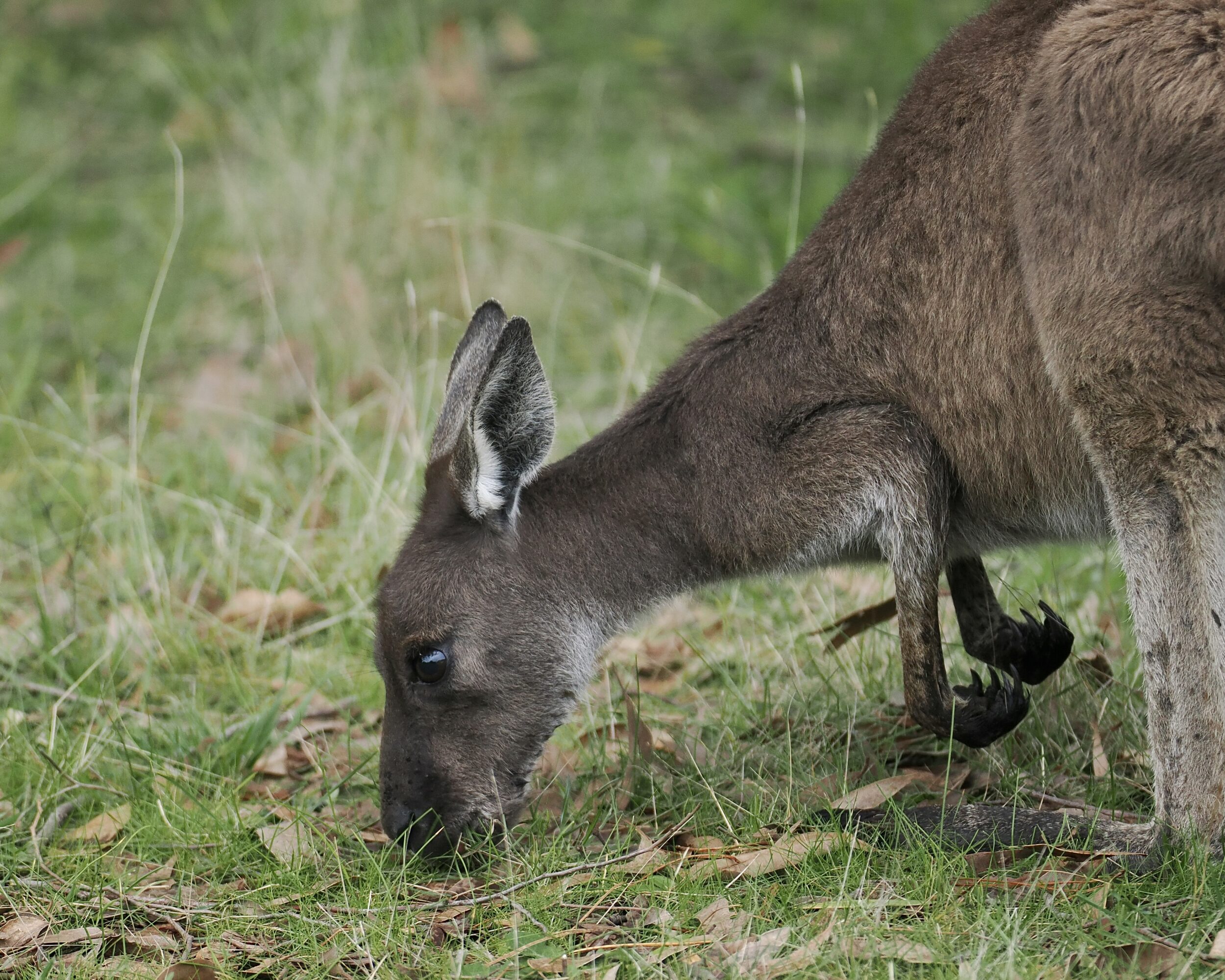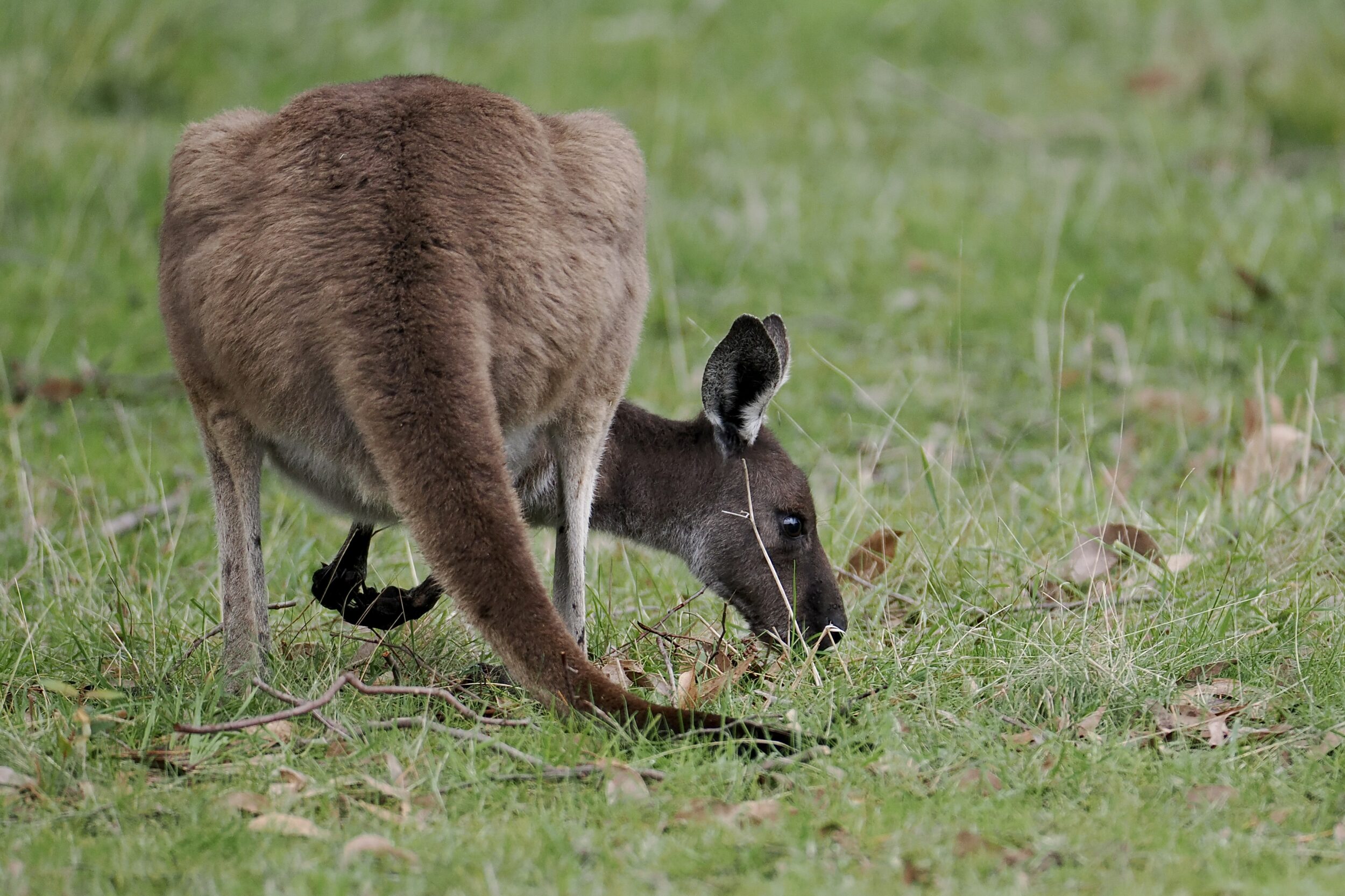At least one member of each of the two then visibly-present mammal species had a good look at each other.
Deep Creek Conservation Park’s stringybark forest is rich in both flora and fauna…and in other living things.
Humans aside, Deep Creek has at least eleven mammal species, but most human visitors see only the one you are now looking at: Macropus filiginosus, the western grey kangaroo.
Comments closed